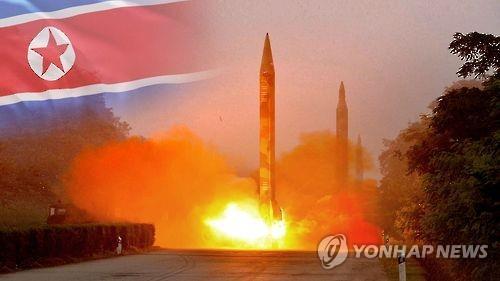North Korea has launched two medium-range ballistic missiles Ro Dong (Not Dong), one of these exploded during the boost phase. This is what they communicate from the Ministry of Defense of South Korea.
The missiles were launched from the southwestern region of Eunyul. The second No Dong flew for about a thousand kilometers before crashing into the waters off the east coast of North Korea.
According to Tokyo, the Northern missile seems to have fallen into exclusive economic zone (EEZ), about 250 km west of Akita Prefecture, in northeastern Japan.
This shows that the system development process Not Dong keep it going. Although not yet reliable, progress in stabilizing an asset capable of hitting a target at 1300 kilometers away is obvious.
The last test dates back to 19 last July, when the North launched three missiles, two Ro Dong and one Scud, in response to Seoul's move to implement the US THAAD system in the country. The southern city of Seongju will host the High Altitude Area Defense System. The missile system will be built in the province of Gyeongsang, 296 km southeast of Seoul. The chosen site is considered ideal for intercepting incoming ballistic missiles from North Korea, to protect sensitive areas of the country such as nuclear plants and oil wells.
According to the analyzes carried out, the new asset will make it possible to defend two thirds of the territory of South Korea. The sites in the city of Daegu and Pyeongtaek have not been deemed suitable. The site was chosen to maximize military effectiveness, while ensuring the safety of the local population. The THAAD system will be built not far from a South Korean artillery unit in the village of Seongsan, one mile from Seongju.
China formally opposed the new defense asset, fearing that the early warning radar could be used to monitor Beijing's military moves. In the joint note, Washington and Seoul note that "the defensive shield will be directed only against North Korea".
Il Kinetic Kill of the High Altitude Area Defense Terminal o THAAD, it is considered able to destroy, in its terminal flight phase, a medium and short range ballistic missile thanks to the impact kinetic energy. Lockheed Martin, confirms a range of 200 km at an operating altitude of 150 km and a maximum speed of Mach 8.24. The THAAD systems would close the defensive circle to protect the outer layer of South Korea, integrating with the systems Aegis e Patriot already active. Work on the site has already begun. The THAAD system will be operational by the end of next year.
Pyongyang, which has closed its office at the United Nations, the only channel of communication with the United States, continues to develop ballistic missile technology, despite the ban imposed by the resolutions of the United Nations Security Council. Since the establishment of Kim Jong-un at the end of the 2011, North Korea should have tested 32 ballistic missiles. Six missiles Musudan (estimated range of approximately 3.000 / 4.000 kilometers) and six Not Dong they are officially confirmed. The single-stage ballistic missile Not Dong has an estimated range of 1300 kilometers with a load capacity of 700 kilograms.
The ballistic missile Musudan, copy for land use of the Soviet SS-N-6 system Serb, theoretically it could hit Guam as well as the Aleutian islands in the northern Pacific. Although the changes made to increase the range of the missile are plausible, it would still be a vector capable of carrying a single nuclear warhead from 1-1,2 Mt.












